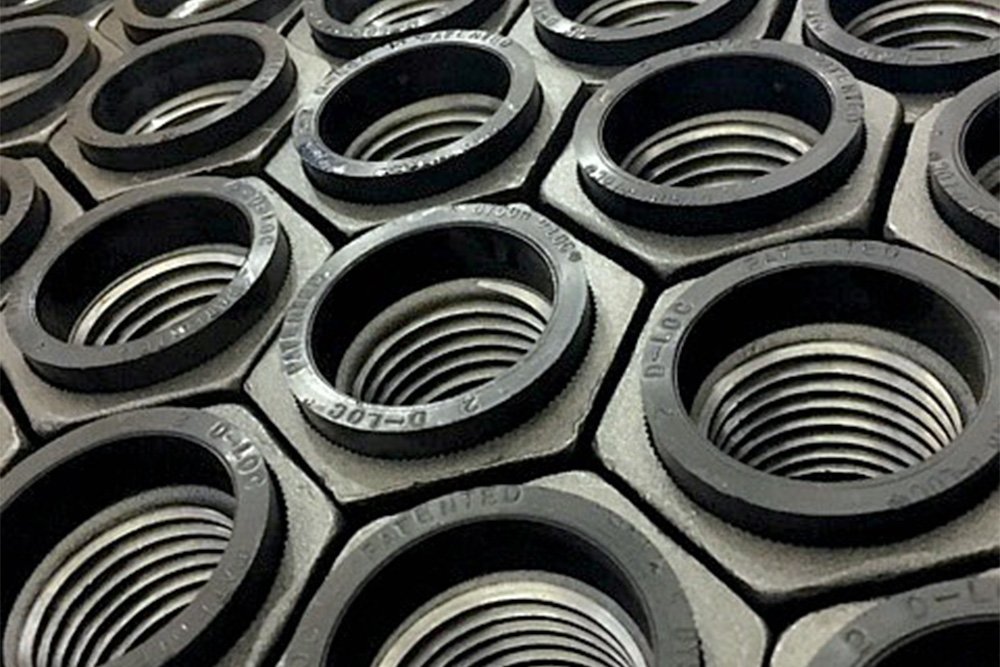We understand the importance of critical parts. Dyson Corp. has more than 120 years of experience providing builders and constructors with the manufactured parts they need to turn blueprints into bridges, buildings, mining structures and other large structures.
One of the most frequently ordered parts for critical infrastructure, construction, and mining projects are locking nuts. If you’re unfamiliar with this type of domestic heavy hex nut, you may have questions such as, “How does a lock nut work?” Discover more about this incredibly important assembly piece today.
How Does a Lock Nut Work?
Some metal nuts loosen over time, especially when exposed to a lot of torque and vibration. For instance, the large nuts used to hold bolts in place on bridges may suffer slippage over time because of the significant vibrations they face. Lock nuts are designed in a way that minimizes vibration and leakage.
While there are many types of lock nuts, all of them can typically be placed into one of two categories:
- Some lock nuts use friction to prevent slipping.
- Others come with a locking device that holds the nut in place.
Friction Reliant
Lock nuts that rely on friction require more torque to tighten or loosen them. This special type of nut cannot be rapidly spun around a long thread length, which means that using them increases the amount of time required for assembly.
However, many construction professionals believe that the slowdown in assembly is worth it, as these friction-reliant nuts are much less likely to slip due to vibration, torque, and other things that cause some nuts to slip.
Locking Device
Conversely, the other type of lock nut that relies on a locking mechanism comes with a unique design that helps them resist slippage. These mechanisms that hold the nut in place are referred to as “positive locking devices.”
While the nut itself can be freely turned to tighten or loosen it, it is held into place when the positive locking device, often a pin of some sort, is placed through the nut.
For example, castellated nuts, which is the most common type of nuts that rely on a locking mechanism, have a cylindrical extension on one end that contains notches. These notches push against the pin that is threaded through the shaft. Castellated nuts are typically secured with a cotter pin, an R-clip, or a safety wire.
Uses of Lock Nuts
Generally speaking, lock nuts are used on projects where the bolts that are put in place are expected to deal with a significant amount of vibrations.
Bridges
One of the most common entities that uses our lock nuts are government contractors who rely on these products for bridge construction.
With potentially thousands of cars driving over a bridge each day, vibration is a significant problem. Without a specialty locking nut applied to each bolt, it would not take long for the nuts to start slipping. This situation could lead to bolts working themselves loose, leading to unthinkable problems.
Naval
Additionally, lock nuts are used in U.S. Naval ships. With so many powerful engines propelling the vessel through the water, vibration is a major problem. Having these lock nuts in place ensures that bolts don’t come loose, which would result in the vessel taking on water.
Mining
Underground equipment used in mining is subject to intense pressure and vibration. Lock nuts help create greater resistance against the effects of vibration to ensure that equipment does not become loose.
Our manufactured products are durable, long-lasting, and versatile for a number of mining situations. Lock nuts support the needs of crushers, ball mills, vertical mills, conveyers, grinding equipment, and other high-vibration applications.
Large Buildings
Finally, there are cases in which lock nuts are used in large buildings. This is especially true in buildings that are connected to parking structures or are situated close to a busy road. Since vehicles produce vibration, it’s essential that the metal beams and plates that make up the frame of the building be held together with lock nuts.
Get Your Lock Nuts From a Leading Manufacturer
Dyson Corp. has been holding America together since 1884. No matter what type of large structure you’re constructing, we have the specialty assembly pieces you need.
Our team of industry experts are ready to help you put reliable and durable parts into use according to the exact specifications of your job.
We invite you to browse our selection of lock nuts and other domestic nuts. Or, contact us today to find out about our custom forging options and further discuss how a lock nut works.
